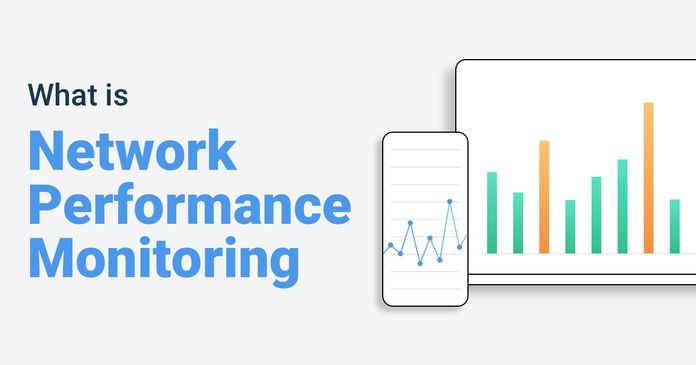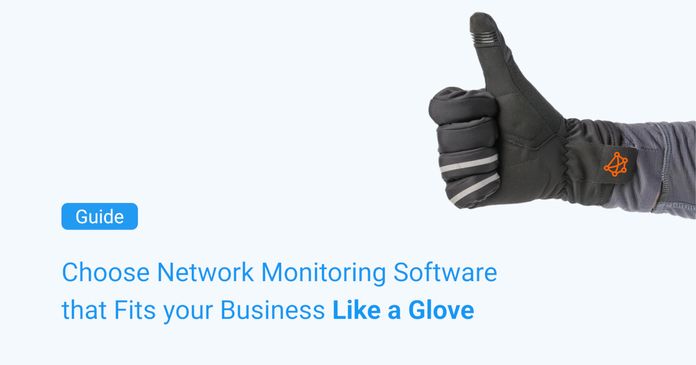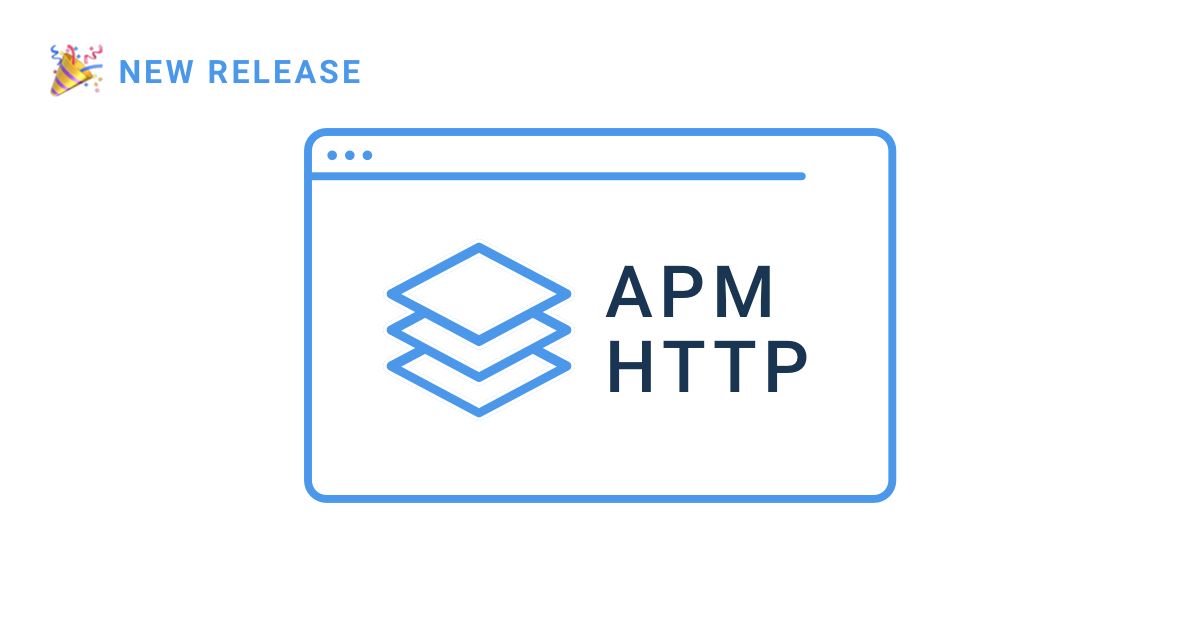Table of Contents
Table of Contents
SaaS provides numerous benefits such as scalability, cost-effectiveness, and ease of deployment. However, as more businesses rely on SaaS applications to run their critical operations, ensuring optimal performance and availability becomes paramount. This is where SaaS network monitoring plays a crucial role.
SaaS applications are hosted in the cloud and accessed by users over the internet. This means that the performance and availability of these applications heavily rely on the underlying network infrastructure. Any issues with the network can directly impact the user experience, resulting in slow response times, service interruptions, or even complete outages.
Network monitoring in the SaaS industry involves the continuous surveillance and analysis of network components, including routers, switches, servers, and data centers. It helps to proactively identify and resolve potential bottlenecks, security vulnerabilities, and performance issues, ensuring smooth and uninterrupted service delivery to end-users.
SaaS network monitoring serves as a proactive measure to maintain optimal performance levels. By closely monitoring the network infrastructure, IT teams can identify and address any potential problems before they escalate and affect users. This proactive approach helps minimize downtime and ensures that the SaaS application operates at peak performance.
Additionally, network monitoring provides valuable insights into network traffic patterns, bandwidth utilization, and resource allocation. This information enables IT teams to optimize network resources, plan for capacity upgrades, and allocate bandwidth effectively, ensuring a seamless user experience.
By continuously monitoring the network, businesses can also identify and mitigate security threats. Network monitoring tools can detect and alert on unusual or malicious network activities, helping prevent data breaches, unauthorized access, and other cyber threats that can compromise the integrity and confidentiality of SaaS applications and sensitive user data.
In summary, SaaS network monitoring is essential for maintaining the health, performance, and security of SaaS applications. It allows businesses to proactively address issues, optimize network resources, and provide a seamless experience to end-users.
In the following sections of this beginner's primer, we will delve deeper into the fundamentals of SaaS network monitoring, explore its benefits, discuss common tools and techniques, and provide best practices for successful implementation. So, let's embark on this journey to discover the ins and outs of SaaS network monitoring and how it can revolutionize your SaaS operations.
Stay tuned for the next section where we will dive into the fundamentals of SaaS network monitoring, explaining the concept and purpose in the SaaS context.
To truly grasp the ins and outs of SaaS network monitoring, it's important to start with the fundamentals. In this section, we will explore the concept of SaaS (Software as a Service) and its relationship with network monitoring, as well as define network monitoring and understand its purpose within the SaaS context.
Software as a Service, or SaaS, is a cloud computing model in which software applications are delivered over the internet to users on a subscription basis. Instead of installing and maintaining software locally on individual computers or servers, users access the application through a web browser, with the service provider handling all the underlying infrastructure, maintenance, and updates.
SaaS offers several advantages to businesses, such as scalability, cost savings, and simplified management. It allows organizations to focus on using the software rather than managing the underlying technology stack. However, as SaaS applications heavily rely on the internet and network connectivity, monitoring the network becomes crucial for ensuring optimal performance.
Network monitoring refers to the practice of observing and analyzing the performance, network availability, and security of network infrastructure components. It involves the collection and analysis of network data to gain insights into the behavior and health of the network, identify potential issues or bottlenecks, and take proactive measures to optimize performance and mitigate risks.
In the context of SaaS, network monitoring focuses specifically on monitoring the network infrastructure that supports the delivery of SaaS applications. It involves monitoring elements such as routers, switches, firewalls, load balancers, and data centers to ensure that the network is operating efficiently, securely, and reliably.
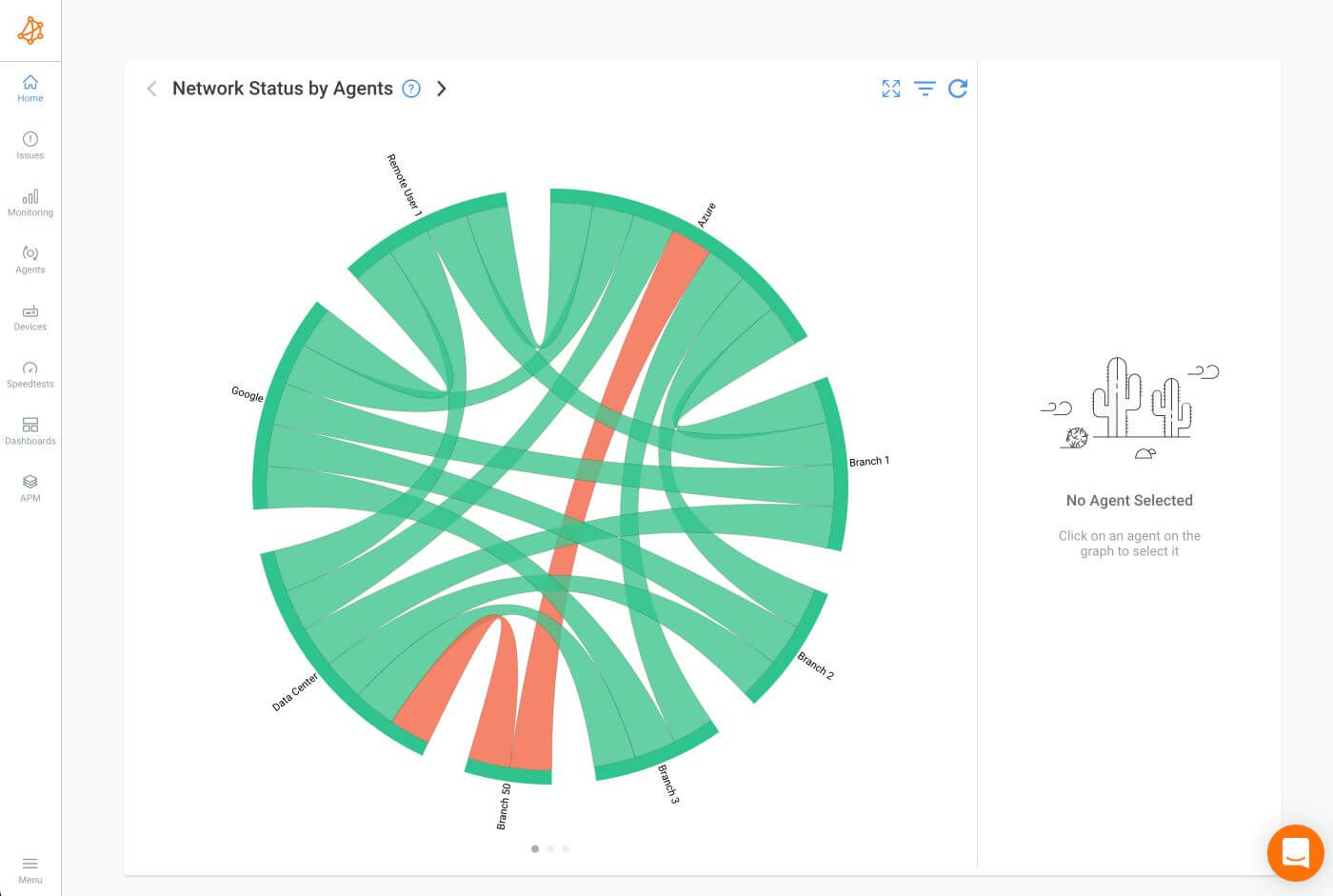
The primary purpose of network monitoring in the SaaS context is to maintain optimal performance and availability of the SaaS applications. By continuously monitoring the network, IT teams can detect and resolve network-related issues that may impact the performance of the applications or cause service disruptions. It helps in proactive capacity planning, traffic optimization, and resource allocation to ensure smooth and uninterrupted delivery of services to end-users.
Additionally, network monitoring in SaaS environments plays a crucial role in ensuring security. It allows for the detection and prevention of unauthorized access attempts, unusual network behavior, or any potential security breaches that could compromise the confidentiality, integrity, or availability of the SaaS applications and the data they handle.
In the next section, we will delve deeper into the benefits of SaaS network monitoring, exploring how it enhances uptime, optimizes performance, and strengthens security. By understanding these benefits, you'll gain a clearer picture of the value that network monitoring brings to SaaS environments.
SaaS network monitoring offers numerous benefits that are vital for ensuring the optimal performance, reliability, and security of SaaS applications. In this section, we will explore these benefits in detail and understand how network monitoring enhances uptime, optimizes performance, and strengthens security in the SaaS environment.
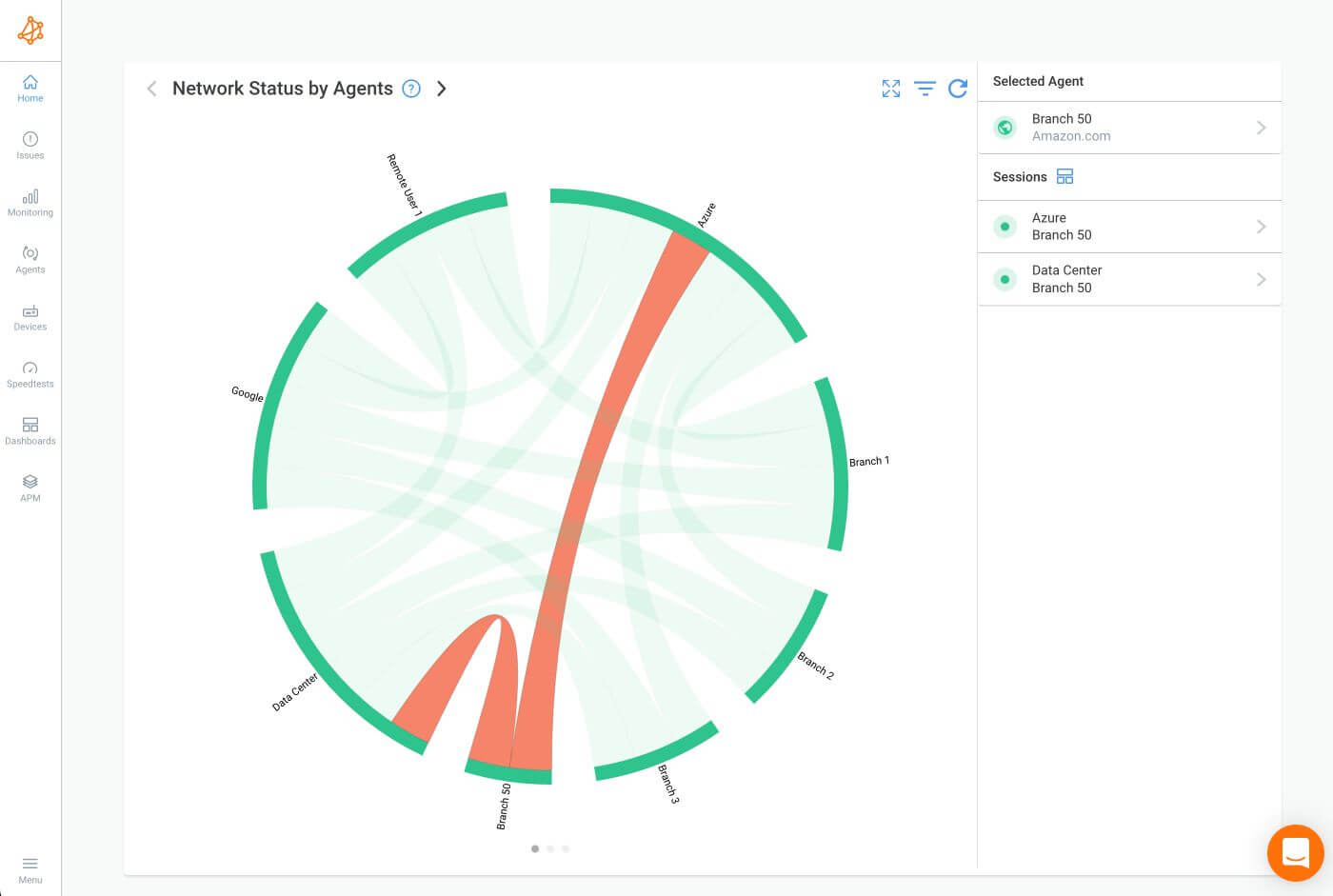
Downtime can be detrimental to any business relying on SaaS applications. It can lead to lost productivity, revenue loss, and a negative impact on customer satisfaction. SaaS network monitoring plays a critical role in enhancing uptime and minimizing downtime.
By continuously monitoring the network infrastructure, IT teams can identify and resolve potential issues before they escalate and cause service disruptions. Network monitoring tools can detect anomalies, such as network congestion, hardware failures, or bandwidth bottlenecks, and trigger network monitoring alerts to IT personnel. These early warnings allow for swift action to address the underlying problems, minimizing the impact on application availability and ensuring uninterrupted service to end-users.
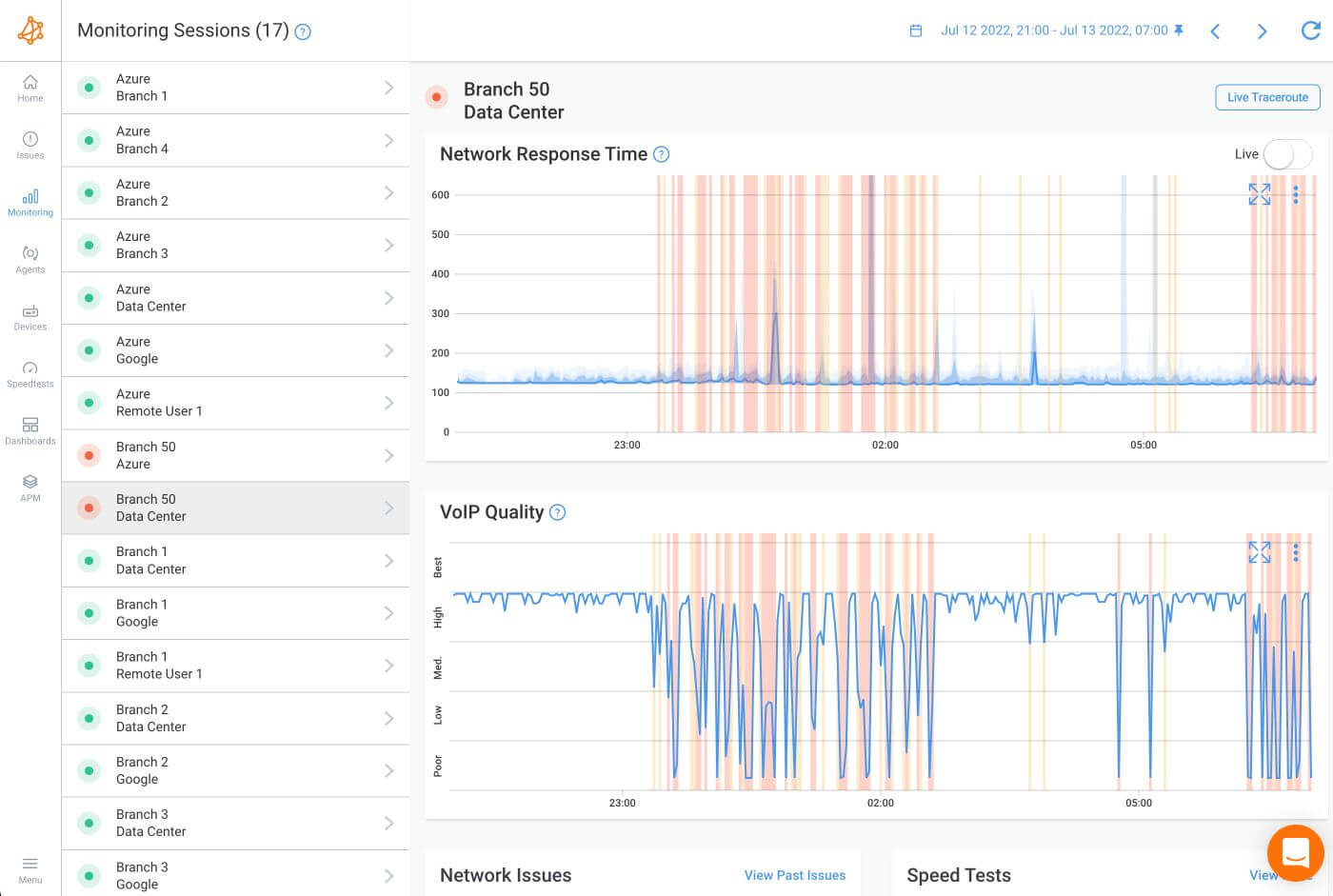
Proactive monitoring also enables IT teams to perform regular maintenance and upgrades during scheduled maintenance windows, minimizing the need for unscheduled downtime. By actively monitoring the network, organizations can ensure that SaaS applications remain accessible and operational, even during maintenance activities.
In the SaaS environment, network performance directly impacts the user experience. Slow response times, sluggish application performance, or delays in data transmission can frustrate users and diminish their productivity. SaaS network monitoring helps identify and resolve performance bottlenecks to ensure optimal application performance.
By monitoring key performance indicators (KPIs) such as bandwidth utilization, latency, packet loss, and jitter, IT teams can gain insights into network behavior and identify areas that require optimization. They can proactively address network congestion, optimize bandwidth allocation, or implement Quality of Service (QoS) measures to prioritize critical application traffic.
 Additionally, network monitoring enables IT teams to track application performance metrics. By monitoring response times, server load, and application-specific metrics, such as transaction success rates or database query times, organizations can pinpoint performance issues that may stem from network-related factors. This allows for targeted troubleshooting and optimization to improve overall application performance.
Additionally, network monitoring enables IT teams to track application performance metrics. By monitoring response times, server load, and application-specific metrics, such as transaction success rates or database query times, organizations can pinpoint performance issues that may stem from network-related factors. This allows for targeted troubleshooting and optimization to improve overall application performance.
The security of SaaS applications and the data they handle is of paramount importance. Network monitoring plays a crucial role in proactively managing network security and preventing cyber threats.
Network monitoring tools can detect and alert on unusual network activities, such as network intrusions, unauthorized access attempts, or suspicious traffic patterns. By monitoring network traffic and analyzing log data, IT teams can identify potential security breaches or anomalies and respond promptly to mitigate the risks.
Furthermore, network monitoring helps ensure compliance with security standards and regulations. By monitoring network devices, enforcing access controls, and analyzing network logs, organizations can meet regulatory requirements and implement effective security measures.
In summary, SaaS network monitoring enhances uptime, optimizes performance, and strengthens security in SaaS environments. By continuously monitoring the network infrastructure, organizations can proactively address issues, optimize resources, and deliver a seamless and secure experience to end-users.
In the next section, we will explore common network monitoring tools and techniques used in SaaS environments. Understanding these tools and techniques will provide insights into how network monitoring is implemented in practice to achieve these benefits.
In the realm of SaaS network monitoring, there are various tools and techniques available to help organizations effectively monitor and manage their network infrastructure. In this section, we will explore some of the common network monitoring tools and techniques used in SaaS environments.
- SNMP-Based Network Monitoring: Simple Network Management Protocol (SNMP) is a widely adopted protocol for network monitoring. SNMP network monitoring tools collect data from network devices, such as routers, switches, and firewalls, using SNMP queries. These tools provide valuable insights into device performance, bandwidth usage, and other relevant metrics.
- Packet Sniffers: Packet sniffers capture and analyze network traffic in real-time. They allow IT teams to inspect individual packets, monitor traffic patterns, and identify anomalies or performance bottlenecks. Packet sniffers are useful for troubleshooting network issues, detecting network congestion, and understanding application behavior.
- Flow-Based Monitoring: Flow-based monitoring tools analyze network flow data generated by routers or switches. Flow data provides information about network conversations, including source and destination IP addresses, protocols used, and data volumes. Flow-based monitoring helps in understanding network traffic patterns, detecting anomalies, and identifying potential security threats.
- Log Analysis Tools: Log analysis tools collect and analyze logs generated by network devices, servers, and applications. These tools help identify and correlate events, track system and network changes, and detect security incidents. Log analysis is crucial for proactive threat detection and compliance monitoring.
- Performance Monitoring Platforms: Performance monitoring platforms offer comprehensive monitoring capabilities for network infrastructure, applications, and user experience. These tools collect and analyze performance data from various sources, providing real-time insights into network health, application response times, and user interactions. They often include customizable dashboards, alerting mechanisms, and reporting features.
Learn about network performance monitoring to optimize network performance. Discover key network metrics, tools & techniques & the benefits for businesses.
Learn more

- Real-Time Monitoring: Real-time monitoring involves continuously monitoring network devices and applications to capture performance data as events occur. It enables IT teams to detect and respond to issues promptly, reducing the impact on users and ensuring timely troubleshooting.
- Threshold-Based Monitoring: Threshold-based monitoring involves setting predefined thresholds for specific performance metrics. When these thresholds are exceeded, alerts are triggered, indicating potential issues. Threshold-based monitoring helps organizations proactively identify performance bottlenecks and take appropriate actions to prevent service disruptions.
- Trend Analysis: Trend analysis involves analyzing historical performance data to identify patterns and trends. By understanding performance trends over time, organizations can forecast future needs, plan capacity upgrades, and optimize resource allocation.
- End-to-End Monitoring: End-to-end monitoring focuses on monitoring the entire path that data traverses from the user's device to the SaaS application and back. It involves monitoring network connectivity, application performance, and user experience to gain holistic insights into the performance and availability of the SaaS service.
It's important to note that the choice of network monitoring tools and techniques may vary based on the specific requirements and infrastructure of each organization. Organizations should evaluate their needs and consider factors such as scalability, ease of use, integration capabilities, and the level of visibility required when selecting network monitoring tools.
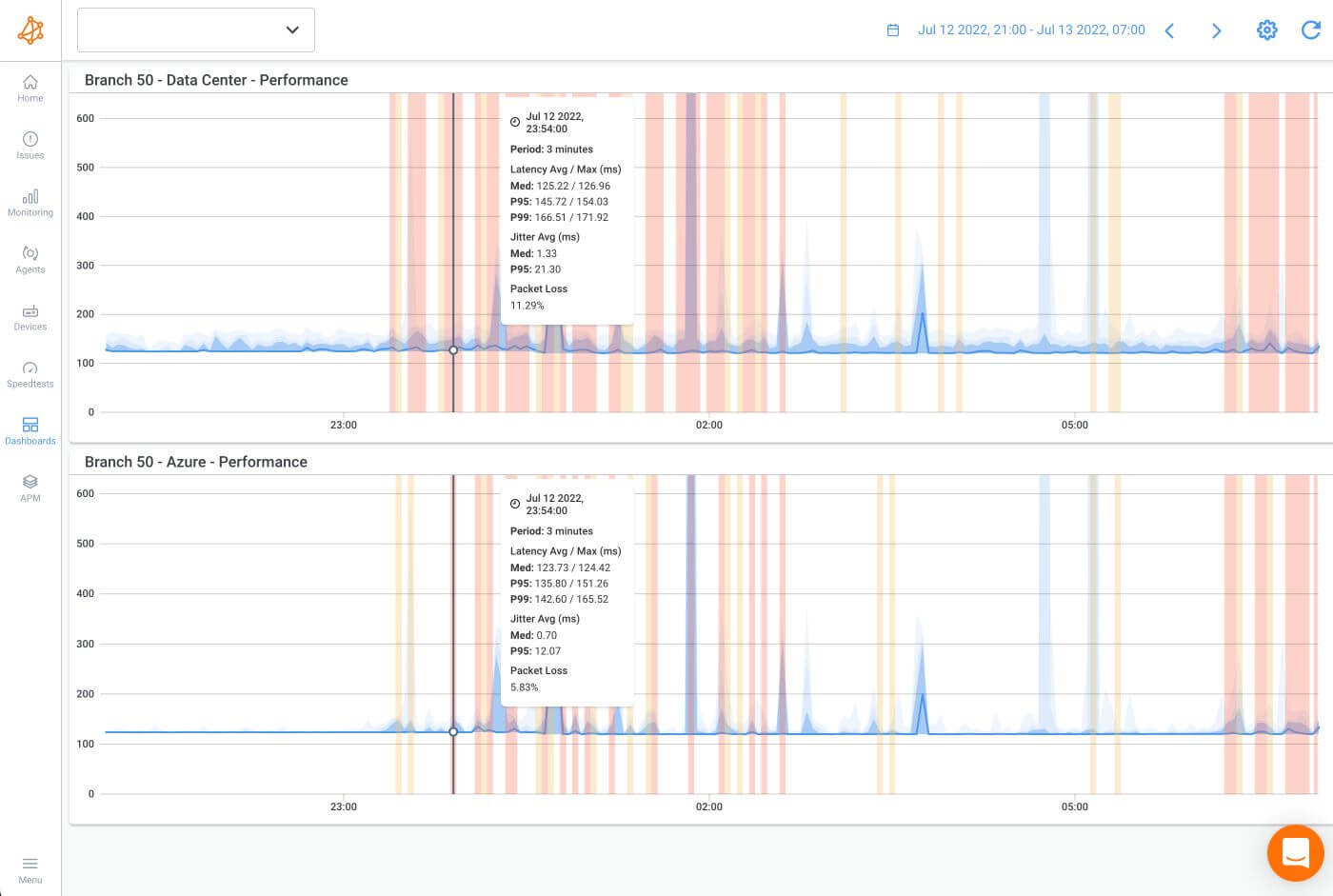
In the next section, we will delve into the key metrics and indicators that organizations should monitor as part of their SaaS network monitoring strategy. Understanding these metrics is crucial for gaining insights into network performance, identifying issues, and optimizing SaaS application delivery.
When it comes to SaaS network monitoring, there are several key metrics and indicators that organizations should pay attention to. These metrics provide insights into the performance, availability, and security of the network infrastructure supporting the SaaS applications. In this section, we will explore some of the essential metrics that organizations should monitor as part of their SaaS network monitoring strategy.
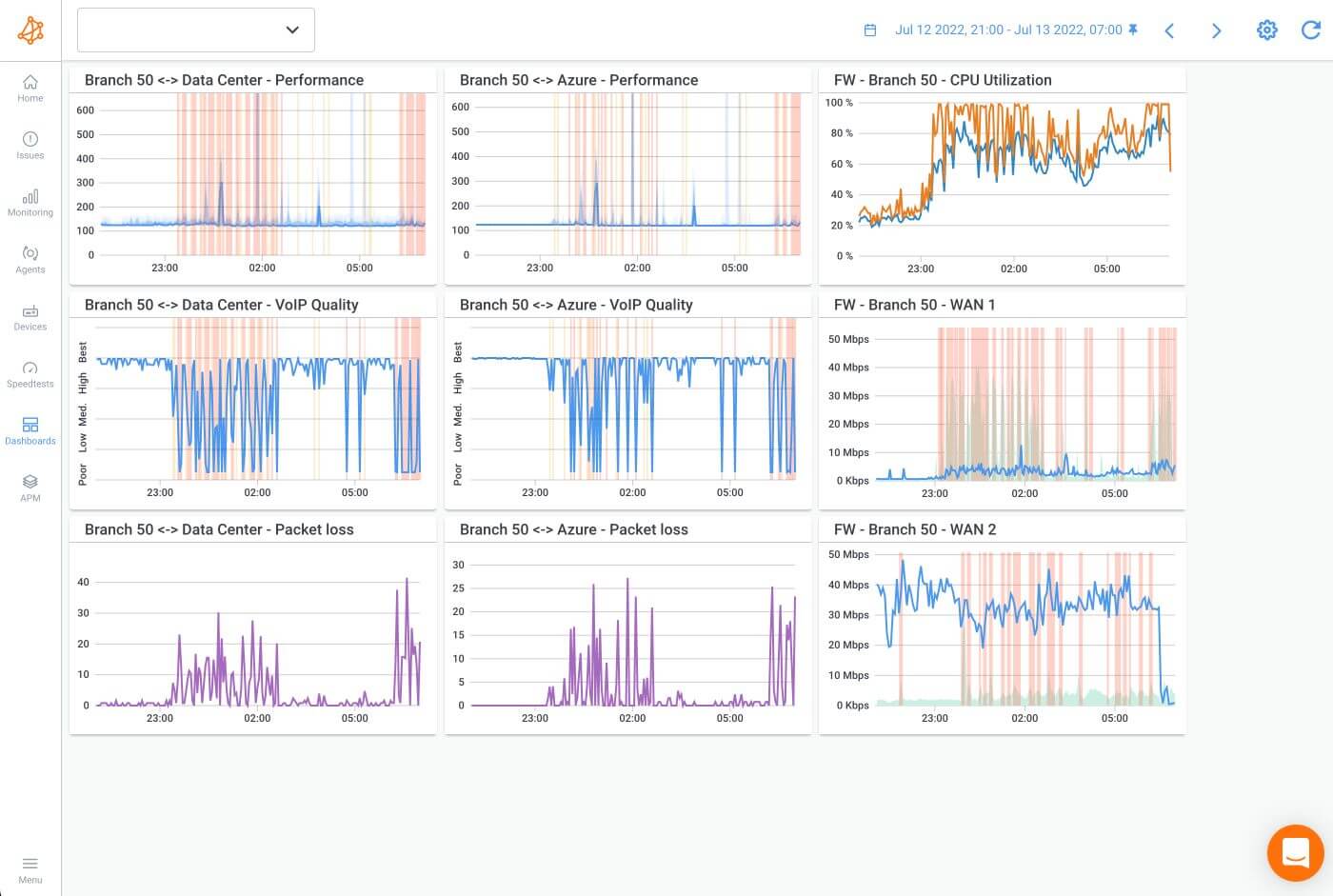
Bandwidth utilization is a crucial metric for understanding how much of the available network capacity is being used. By monitoring bandwidth utilization, organizations can identify periods of high traffic and potential congestion points. This information helps in capacity planning and optimizing network resources to ensure smooth data transmission and application performance.
Latency measures the time it takes for data packets to travel from the source to the destination. High latency can result in delays in data transmission, leading to slow application response times and a poor user experience. Monitoring latency allows organizations to identify network bottlenecks, troubleshoot connectivity issues, and optimize network routing to minimize latency and improve application performance.
Learn how to measure latency with Obkio’s Network & Latency Monitoring tool. Check for latency in your network & analyze latency measurements.
Learn more

Packet loss refers to the percentage of data packets that fail to reach their destination. High packet loss rates can indicate network congestion, hardware issues, or other network problems that affect data integrity and application performance. By monitoring packet loss, organizations can proactively address network issues, optimize network configurations, and ensure reliable data transmission.
Lost packets? No problem! Follow our guide and master the art of troubleshooting packet loss and say goodbye to network issues for good!
Learn more

Jitter measures the variation in packet delay, typically caused by fluctuations in network congestion or routing. High jitter can result in inconsistent application performance, leading to packet retransmissions and delays. Monitoring jitter helps organizations identify network instability, troubleshoot underlying causes, and implement measures to mitigate its impact on application performance.
Learn how to measure network jitter using Obkio’s Network Monitoring software to identify network problems & collect data to troubleshoot.
Learn more

In addition to monitoring network-specific metrics, organizations should also monitor application performance metrics. These metrics may include response times, throughput, error rates, and transaction success rates. By monitoring these metrics, organizations gain insights into how the SaaS applications are performing from an end-user perspective. It allows for targeted troubleshooting, optimization, and ensuring that service-level agreements (SLAs) are met.
Network monitoring also plays a vital role in ensuring the security of SaaS applications. Organizations should monitor security-related metrics such as firewall logs, intrusion detection system (IDS) alerts, and access logs to detect and respond to potential security incidents. Monitoring these metrics helps in early threat detection, rapid incident response, and maintaining the integrity and confidentiality of the SaaS applications and data.
By monitoring these key metrics and indicators, organizations can gain a comprehensive understanding of their SaaS network infrastructure's performance, availability, and security. This data enables proactive decision-making, timely troubleshooting, and optimization to deliver a seamless and secure experience to end-users.
In the next section, we will explore the implementation of SaaS network monitoring, including planning, deployment, and configuration of network monitoring solutions in SaaS environments.
Implementing SaaS network monitoring involves planning, deploying, and configuring network monitoring solutions tailored to the specific needs of SaaS environments. In this section, we will explore the key considerations and steps involved in implementing SaaS network monitoring.
- Assessing Monitoring Needs: The first step is to assess the monitoring requirements and objectives of the organization. This includes identifying the critical SaaS applications, determining the desired level of visibility, and understanding the specific metrics and indicators that need to be monitored.
- Selecting Monitoring Tools: Based on the assessment, organizations should select appropriate network monitoring tools that align with their requirements. Consider factors such as scalability, ease of use, integration capabilities, and the ability to monitor both network infrastructure and application performance.
- Planning Monitoring Infrastructure: Determine the placement of monitoring agents or sensors within the network infrastructure to gather relevant data. Consider the network segments, devices, and applications that require monitoring. Plan the deployment of monitoring tools and the necessary hardware or virtual infrastructure.
- Configuring Monitoring Agents: Configure monitoring agents or sensors to collect the desired network data. This may involve setting up SNMP queries, configuring packet capture filters, or defining flow data collection parameters. Ensure that monitoring agents are properly deployed and connected to the network to collect accurate and relevant data.
- Setting Baseline Performance: Establish baseline performance metrics for key network and application indicators. This involves defining thresholds or benchmarks that represent normal or acceptable performance levels. Network baselines serve as a reference point for detecting anomalies and triggering alerts when performance deviates from the established norms.
- Implementing Alerting Mechanisms: Configure alerting mechanisms to notify IT teams of potential issues or breaches. Define the conditions that trigger alerts based on specific metrics or thresholds. Establish escalation procedures to ensure timely response and resolution.
- Customizing Dashboards and Reports: Customize monitoring dashboards and reports to provide relevant information to different stakeholders. Consider the specific needs of network administrators, IT managers, and business stakeholders who require insights into network performance, security, and application availability.
- Integrating with Incident Management: Integrate network monitoring with incident management systems to streamline the incident response process. Ensure that alerts generated by the network monitoring tools are efficiently captured, tracked, and resolved using established incident management practices and workflows.
- Ongoing Monitoring and Maintenance: SaaS network monitoring is an ongoing process. Continuously monitor the network, review performance metrics, and refine monitoring configurations as needed. Regularly update monitoring tools, apply patches, and stay abreast of emerging threats and vulnerabilities.
By following these implementation steps, organizations can establish a robust SaaS network monitoring system that provides actionable insights, improves performance, and ensures the security of their SaaS applications.
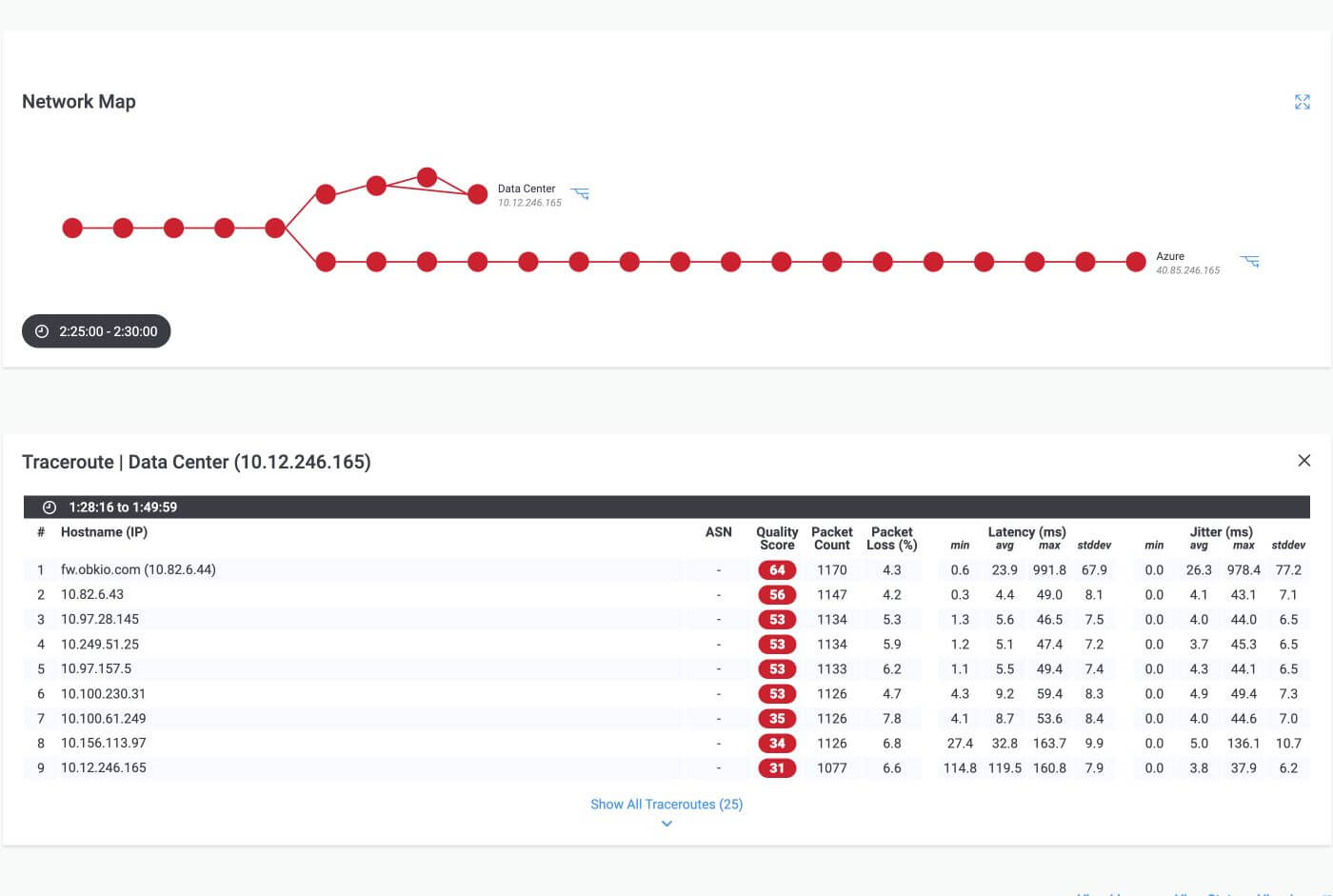
In the next section, we will explore best practices for successful SaaS network monitoring, including tips for optimizing monitoring effectiveness and maximizing the value of network monitoring in SaaS repositories.
To ensure effective and successful SaaS network monitoring, organizations should follow best practices that optimize monitoring effectiveness and maximize the value of network monitoring in SaaS repositories. In this section, we will explore some key best practices to consider.
- Establish Baseline Performance: Set baseline performance metrics for key network and application indicators. Understanding normal performance levels allows for the detection of anomalies and deviations from the established norms. Regularly update baselines to reflect changes in network traffic patterns or application behavior.
- Monitor Key Performance Indicators (KPIs): Identify and monitor the most relevant KPIs for your SaaS applications. This may include metrics such as response times, throughput, error rates, and transaction success rates. Focus on the metrics that align with your business objectives and user experience expectations.
- Implement Real-Time Monitoring and Alerting: Enable real-time monitoring and alerting capabilities to detect and respond to issues promptly. Proactive monitoring allows for quick incident response and minimizes the impact on users. Define alerting thresholds based on acceptable performance levels and ensure alerts are routed to the appropriate teams for timely resolution.
- Customize Dashboards and Reports: Customize monitoring dashboards and reports to provide actionable insights to different stakeholders. Tailor the information presented based on the needs of network administrators, IT managers, and business stakeholders. Clear and visually intuitive dashboards aid in the quick identification of performance trends, bottlenecks, and potential security risks.
- Integrate Monitoring with Incident Management: Integrate network monitoring tools with incident management systems to streamline the incident response process. Capture and track alerts as incidents, ensuring proper escalation and resolution procedures. This integration helps improve collaboration between IT teams, simplifies troubleshooting, and reduces mean time to repair (MTTR).
- Regularly Review and Refine Monitoring Configurations: Perform regular reviews of monitoring configurations and metrics to ensure they align with changing business needs and technology environments. Adjust monitoring parameters as necessary to capture relevant data and reflect evolving performance expectations.
- Leverage Automation and Machine Learning: Explore the use of automation and machine learning capabilities offered by modern network monitoring tools. Automation can streamline repetitive monitoring tasks and reduce manual effort. Machine learning algorithms can provide insights into network behavior, detect anomalies, and assist in proactive issue resolution.
- Continuously Update Monitoring Tools: Stay up-to-date with the latest releases and updates of your chosen network monitoring tools. Regularly apply patches and security updates to ensure optimal functionality and protection against emerging threats. Engage with vendor communities to stay informed about best practices and new features.
- Invest in Training and Skill Development: Provide training and ongoing skill development opportunities for your IT teams involved in network monitoring. Keep them up-to-date with the latest monitoring techniques, tools, and industry best practices. This helps optimize the use of monitoring tools and enhances the effectiveness of network monitoring initiatives.
By following these best practices, organizations can establish a robust and efficient SaaS network monitoring strategy. This allows them to proactively address performance issues, maintain a secure environment, and deliver a seamless user experience.
In the final section, we will explore future trends in SaaS network monitoring, providing insights into emerging technologies and advancements that can shape the future of network monitoring in SaaS environments.
Confidently navigate the network monitoring tools landscape with our ultimate buyer's guide. Expert insights, use cases, and tips for informed choice
Learn more

The field of SaaS network monitoring is continuously evolving, driven by advancements in technology and the ever-changing landscape of the SaaS industry. In this section, we will explore some future trends in SaaS network monitoring, offering insights into emerging technologies and advancements that can shape the future of network monitoring in SaaS environments.
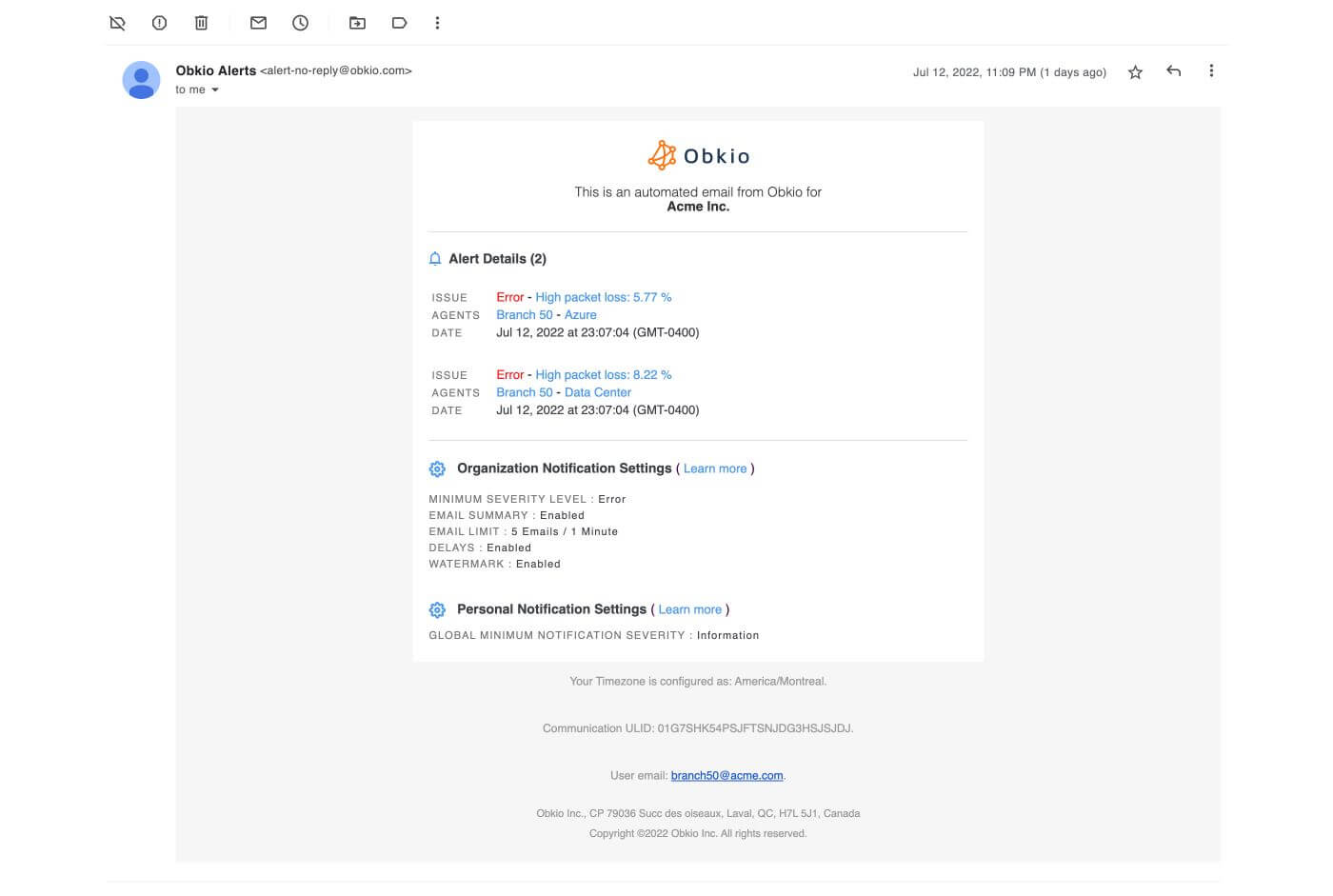
Machine learning (ML) and AI technologies are poised to revolutionize SaaS network monitoring. ML algorithms can analyze large volumes of network data and identify patterns, anomalies, and trends that might go unnoticed by traditional monitoring techniques. By leveraging ML and AI, organizations can gain deeper insights into network behavior, detect complex performance issues, and improve overall network efficiency and security.
ML-powered anomaly detection can proactively identify abnormal network behavior, network attacks, or performance bottlenecks. Predictive analytics can help anticipate network congestion, capacity constraints, or security threats, enabling proactive measures to prevent service disruptions. As ML and AI continue to advance, network monitoring tools will become more intelligent and capable of autonomous decision-making, enhancing the effectiveness and efficiency of SaaS network monitoring.
As SaaS applications increasingly rely on cloud-native architectures, monitoring solutions designed specifically for cloud environments will become more prevalent. These solutions are tailored to monitor cloud-based infrastructure, containers, microservices, and serverless architectures. Cloud-native monitoring tools provide granular visibility into cloud resources, allowing organizations to monitor the performance, scalability, and availability of their SaaS applications in dynamic cloud environments.
The integration of SaaS network monitoring with application performance monitoring (APM) is becoming more essential. APM focuses on monitoring the performance and availability of individual applications, providing insights into application-specific metrics, code-level diagnostics, and user experience. Integrating APM with network monitoring allows organizations to correlate network data with application performance, enabling faster troubleshooting, root cause analysis, and optimization of application delivery in SaaS environments.
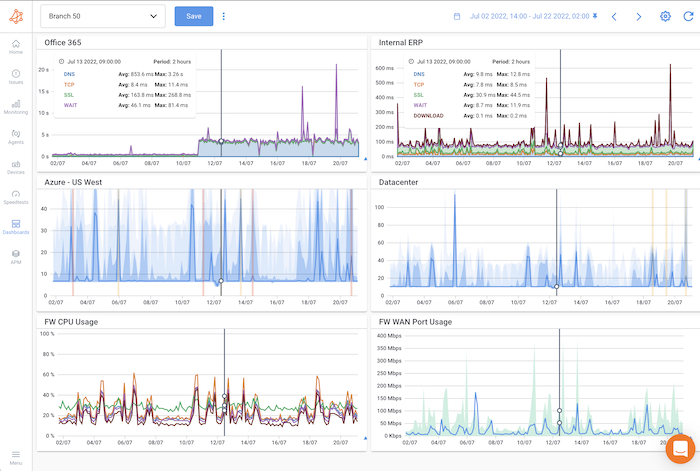
As software-defined networking (SDN) gains traction, network monitoring tools will adapt to monitor these dynamic, programmable networks. SDN monitoring solutions will provide visibility into virtualized network infrastructure, network overlays, and traffic flows orchestrated by SDN controllers. Monitoring SDN environments will require tools that can monitor virtual networks, detect and resolve policy violations, and ensure optimal performance and security in the software-defined landscape.
The proliferation of Internet of Things (IoT) devices and edge computing infrastructures presents new monitoring challenges. Monitoring solutions will need to extend their capabilities to monitor edge devices, gateways, and the network connectivity between them. IoT and edge monitoring will focus on data collection, device performance, and ensuring reliable communication and connectivity for IoT-enabled SaaS applications.
Security will remain a top priority in SaaS network monitoring. Continuous security monitoring will play a critical role in detecting and mitigating evolving threats, vulnerabilities, and attacks. Real-time threat intelligence, network behavior analysis, and integration with security information and event management (SIEM) systems will be crucial to identify and respond to security incidents promptly.
As these future trends continue to shape the landscape of SaaS network monitoring, organizations must stay informed, embrace emerging technologies, and adapt their monitoring strategies to meet the evolving demands of the SaaS industry.
SaaS network monitoring is a vital practice for organizations seeking to ensure the optimal performance, reliability, and security of their SaaS applications. By understanding the fundamentals of SaaS network monitoring, exploring its benefits, and adopting best practices, organizations can proactively manage their network infrastructure and deliver a seamless user experience.
As technology advances, future trends in SaaS network monitoring will bring exciting opportunities and capabilities. From leveraging machine learning and AI for intelligent monitoring to adopting cloud-native and SDN monitoring solutions, organizations can stay at the forefront of network monitoring innovation.

By embracing these trends and continuously evolving their monitoring strategies, organizations can effectively navigate the ever-changing SaaS landscape and ensure the success of their network monitoring initiatives.


























 Obkio Blog
Obkio Blog




